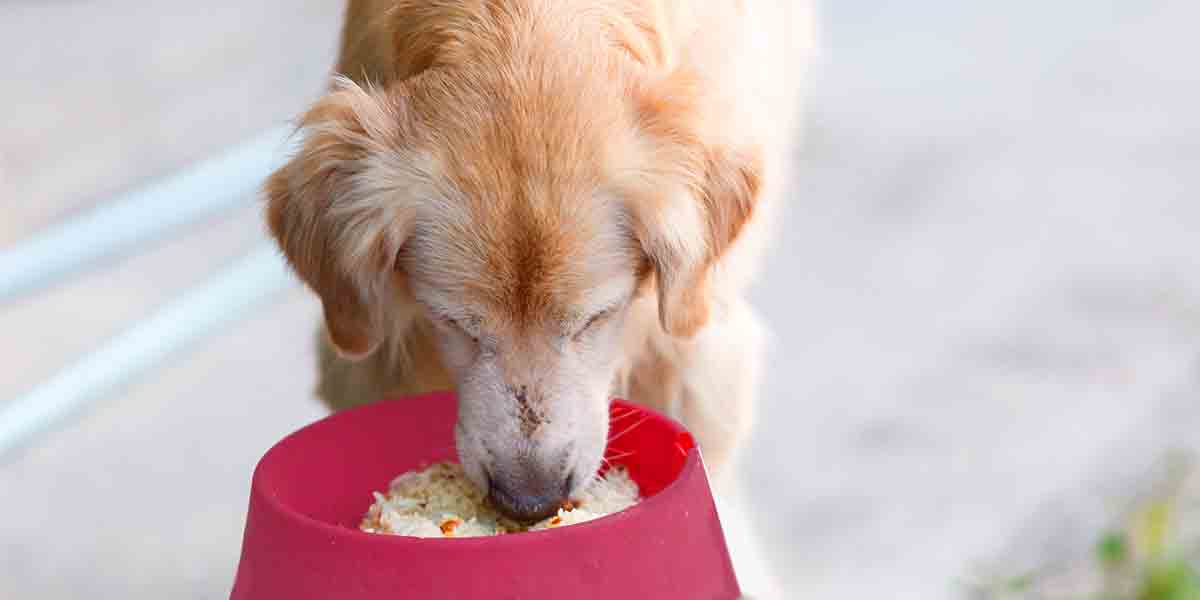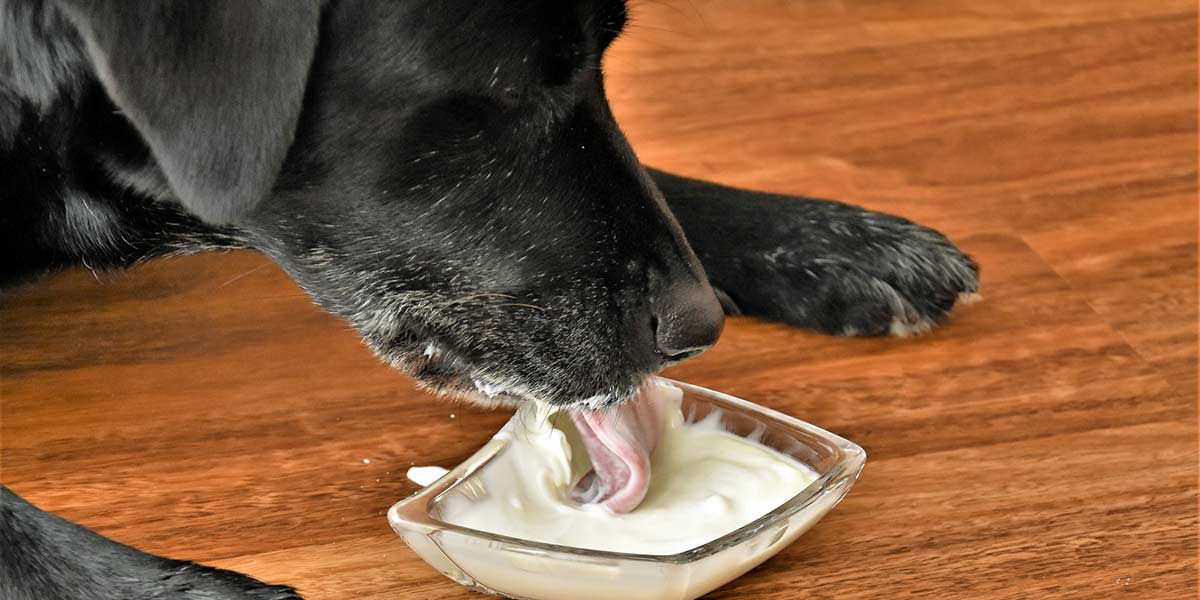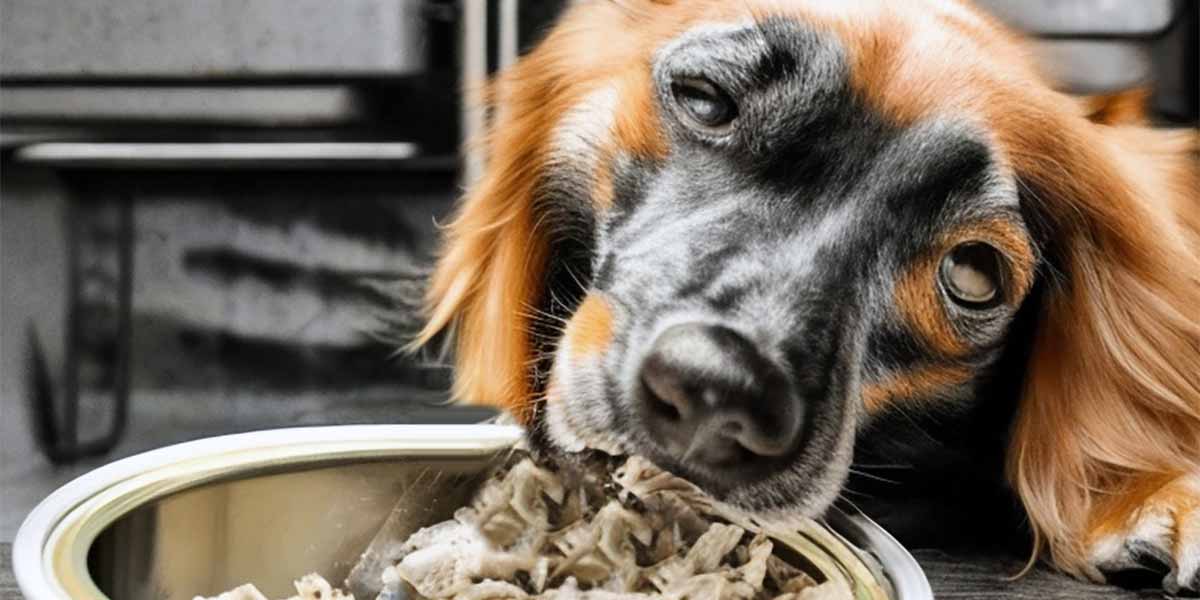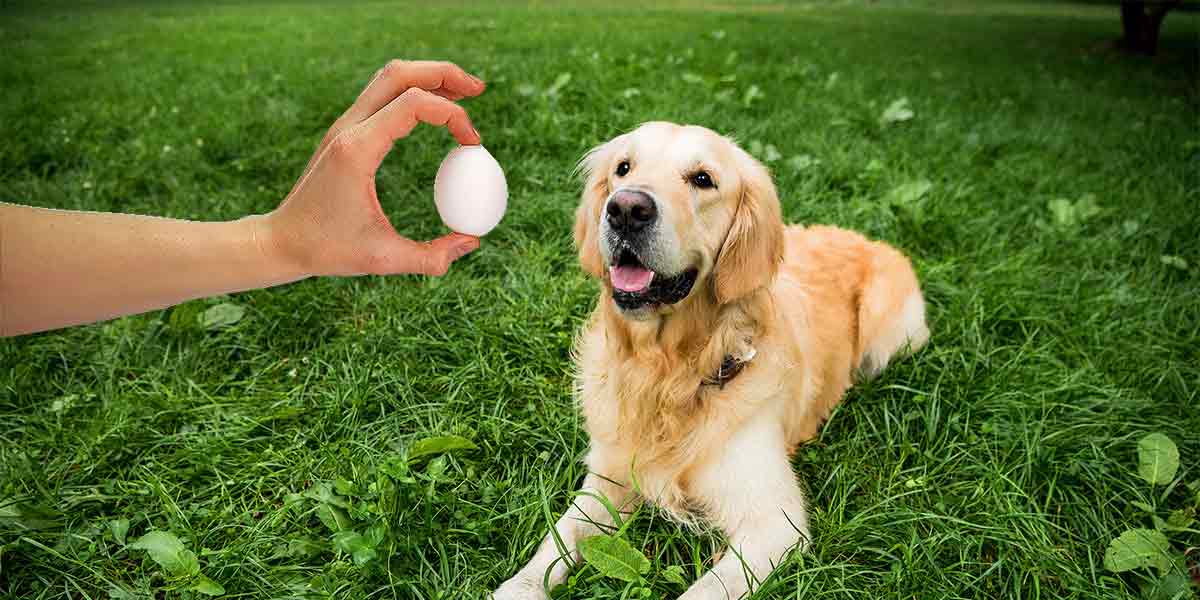Can I feed my dog rice? The question of what pet food to give your dog has probably crossed your mind several times. While dog food is a popular option, many people also include human food in their pets’ diets, and rice is one of these.
As an affiliate, we earn from qualifying purchases. We get commissions for purchases made through links in this website’s posts from Amazon and other third parties.
Rice in your dog’s bowl: Is it safe?
Rice is a popular ingredient in a lot of dog foods, but can it be given to your dog on its own? Is it safe for dogs to consume rice, and what benefits or risks does it pose to your dog’s health? These questions are essential to any pet owner, and in this post, we will explore everything you need to know about feeding your dog rice.
We will cover the benefits of including rice in your pet’s diet, the amount of rice recommended for dogs, and how to prepare it for your furry friend. Additionally, we will discuss the potential risks of feeding your dog rice, and offer some alternatives if you’re not keen on using rice in their diet.
Whether you’re new to owning a dog or you’re a seasoned pet owner, this post will provide information that will help you make informed decisions regarding your furry friend’s diet.
Can I feed my dog rice? The benefits:
Rice is a common food for humans and is also an excellent source of nutrients for our furry friends.
Feeding your dog rice has many benefits, and you might be surprised to discover just how useful it can be. If your dog doesn’t have any grain allergies or doesn’t have any digestive problems when eating rice, you can feed them it as part of their daily diet.
1. Excellent source of carbohydrates
One of the most significant benefits of feeding your dog rice is that it is an easy-to-digest source of carbohydrates. Dogs that have sensitive stomachs or have been sick may find it difficult to digest their usual food. Rice is a gentle and simple ingredient that can be a temporary safe solution.
2. Low-glycemic with a high-quality protein
Similarly, low-glycemic brown rice is a healthy option for dogs having diabetes and obesity. Rice has a high-quality protein that contributes to the proper functioning of a dog’s muscles.
3. Contains fiber and essential nutrients
Feeding your dog rice also offers additional benefits for dogs. Rice is a natural source of fiber and contains essential nutrients such as vitamin B, iron, and zinc.
4. Helps soothe an upset stomach or relieve diarrhea
Plain white rice is easy to digest and can help soothe an upset stomach or relieve diarrhea. It is also a good source of carbohydrates, which can provide your dog with energy and keep them feeling full and satisfied.
Chicken and rice dog food recipe for upset stomach video:
5. A great nutritious addition to dry or bland food for your dog’s palate
Moreover, rice can be easy on the palate, too, which makes it a great addition to dry or bland dog food. By adding rice to your dog’s diet, you’re not only giving them a tasty meal, but you’re also adding nutritional value to their health.
There are many benefits of feeding your dog rice, such as its easy digestion, its protein contribution, and its added nutrient content. Make sure that the rice you are choosing is not added with spices and is not fried.
Choose whole-grain or brown rice, which is a healthier option than white rice. However, consult your vet before making any significant dietary changes to your dog’s food. Feeding the right food to your dog is a great way to ensure they receive the proper nutrients and maintain their overall well-being.
How to cook rice for your dog
Rice is a great addition to your dog’s diet, as it’s easy to digest and packed with nutrients. “Can I feed my dog rice?” is a common query and yes, is the response. However, it’s important to know how to cook it properly to avoid any potential health issues.
When it comes to preparing rice for your dog, it’s important to keep in mind that additives like salt, spices, and oils can be harmful to your dog’s health. Plain white rice is the best option, and it can be served mixed with lean protein like chicken or fish for a complete and balanced meal.
It’s always a good idea to consult with your veterinarian before making any changes to your dog’s diet to ensure that they are getting all the nutrients they need.
Before cooking, wash the rice to get rid of any extra starch. The ratio for cooking rice is typically two cups of water for one cup of rice, but you can adjust this according to your dog’s preference and size.
It’s best to use brown rice over white rice as it contains more fiber and nutrients. Cook the rice until it’s soft and fluffy, and let it cool before serving it to your dog.
Feeding your dog rice on occasion can be beneficial for their health, but it should never replace their regular meals. Always consult with your veterinarian if you have any concerns or questions about your dog’s diet. Happy cooking!
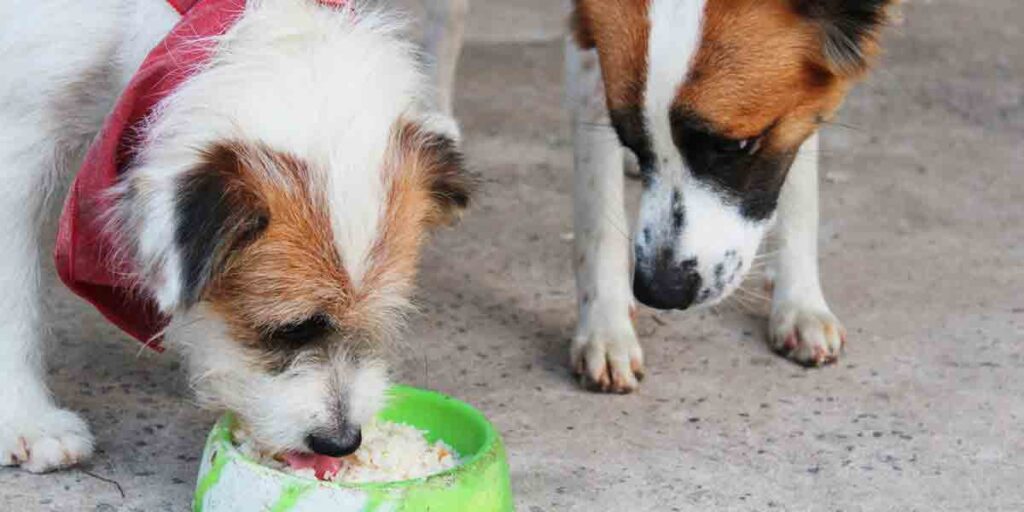
What can I mix with rice for my dog?
You normally can mix it with your dog’s regular food or serve it as a side dish.
If you are wondering what else you can mix with it to make a complete and nutritious meal, here are some options to consider:
1. Protein sources
Adding a protein source to your dog’s rice can help ensure they are getting the necessary amino acids for muscle growth and repair. Some healthy protein options to mix with rice include:
- Cooked chicken or turkey
- Lean ground beef or turkey
- Fish (such as salmon, tuna, or sardines)
- Eggs (cooked)
When adding protein to your dog’s rice, be sure to remove any bones, fat, or skin.
2. Vegetables
Vegetables can provide important vitamins and minerals to your dog’s diet. Some dog-friendly vegetables to mix with rice include:
- Carrots
- Green beans
- Peas
- Sweet potato
- Pumpkin
Be sure to cook the vegetables before adding them to your dog’s rice, and avoid giving them any onions, garlic, or other toxic vegetables.
3. Healthy fats
Healthy fats can help support your dog’s skin and coat health, as well as provide energy. Some healthy fat options to mix with rice include:
- Coconut oil
- Olive oil
- Flaxseed oil
Be sure to use these oils in moderation, as too much fat can lead to weight gain.
Mixing rice with protein, vegetables, and healthy fats can create a well-rounded and nutritious meal for your dog. Just be sure to consult with your veterinarian before making any significant changes to your dog’s diet.

Finally, you should know that not all human food is appropriate to feed your dog.
Is it OK to add rice to my dog’s food?
Adding rice to your dog’s food can have several benefits, including easy digestion, an energy boost, and cost-effectiveness. However, it is important to remember that every dog is different and may have different dietary needs. If you are thinking to make dietary modifications for your dog, always request advice from your veterinarian before.
1. Easy digestion
If your dog has a sensitive stomach, adding rice to their food can help ease digestion. Rice is a bland carbohydrate that is easy to digest and can help settle an upset stomach. It can also help to cure diarrhea and assist control bowel movements.
2. Energy boost
Rice is a great source of carbohydrates, which can provide your dog with a quick energy boost. This is especially important for active dogs or dogs that participate in sports or other physical activities. Adding rice to your dog’s food can help them maintain their energy levels throughout the day.
3. Cost-effective food
Rice is an affordable and readily available ingredient that can be added to your dog’s food to help fill them up. It can be a great alternative to expensive commercial dog foods that may contain fillers and artificial ingredients. Adding rice to your dog’s food can be a cost-effective way to provide them with a nutritious meal.
How much rice should I give my dog?
So, how much rice should you give your dog? As a general rule of thumb, you should aim for about a cup of cooked rice per 20 pounds of your dog’s body weight per feeding day.
It’s best to split this between two meals and mix it with their regular food. Remember, rice should only make up a small portion of their diet, and they still need a balanced mix of protein, healthy fats, and carbohydrates to stay healthy.
When it comes to choosing the right rice, opt for brown rice over white rice.
Brown rice is a more nutrient-dense option and has more fiber, which is great for your dog’s digestion. Also, make sure to cook the rice thoroughly and avoid adding any extra seasonings or spices. Keep it simple to avoid upsetting your pup’s tummy.
The bottom line is that rice is safe to feed your dog, but as with anything, it should be given in moderation. Make sure to give them the right amount, mix it with their regular food, and use brown rice cooked thoroughly. With these simple tips, you can add rice to your dog’s diet and keep them happy and healthy.
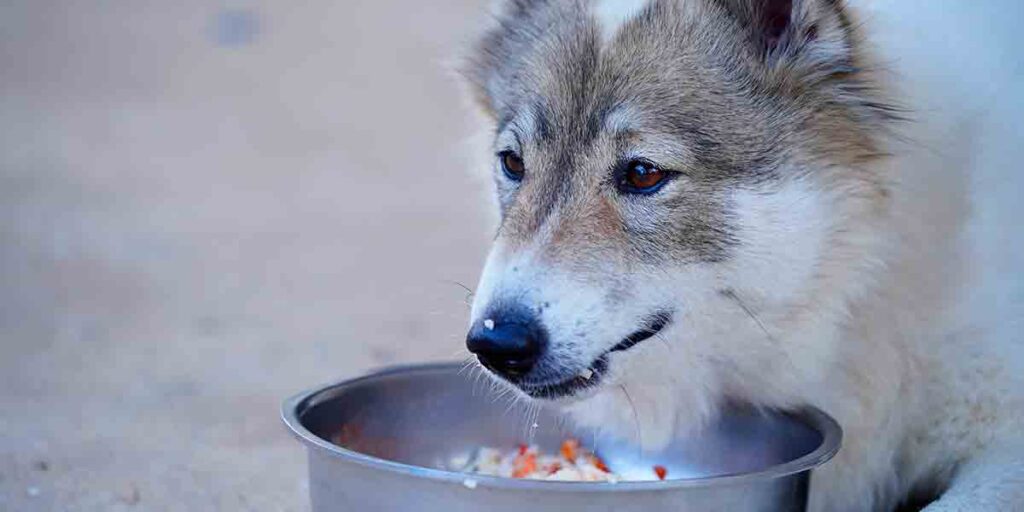
Feeding your furry friend: Can I give my dog rice every day?
Rice is a common ingredient in many homemade dog food recipes, but can you feed your dog rice every day?
The short answer is yes, you can feed your dog rice every day. The right amount of rice is a great source of carbohydrates and can be a healthy addition to your dog’s diet.
However, it’s important to keep in mind that rice should not be the only food your dog eats. A balanced diet should also include protein, fat, and other essential nutrients.
Before making any changes to your dog’s diet, it’s important to consult with your veterinarian. They can help you determine the appropriate amount of rice to feed your dog based on their age, weight, and overall health. Additionally, they can recommend other foods to include in your dog’s diet to ensure they are getting all the necessary nutrients.
Can dogs eat brown rice every day?
If you’re wondering “Can I feed my dog rice every day?” the answer is yes, but with some caveats.
Brown rice is a good source of carbohydrates, fiber, and protein, which are all important for your dog’s overall health. It’s also low in fat and easy to digest, making it a great option for dogs with sensitive stomachs.
However, brown rice doesn’t contain all of the nutrients that your dog needs to thrive, so it’s important to feed them a balanced diet that includes other foods as well.
You can mix the well-cooked, with no seasonings or spices, brown rice with other foods like cooked meat, vegetables, or canned dog food to create a balanced meal that meets your dog’s nutritional needs.

It’s also important to note that not all dogs will tolerate brown rice well. If your dog experiences any digestive issues or allergic reactions after eating brown rice, you should stop feeding it to them and consult with your veterinarian.
In summary, brown rice can be a healthy addition to your dog’s diet when fed in moderation and as part of a balanced meal. Just be sure to cook it thoroughly and avoid adding any seasonings or spices, and monitor your dog’s reaction to ensure they tolerate it well.
Can dogs eat white rice every day?
The answer is yes but – like brown rice – with some caveats.
Feeding your dog white rice every day as their sole source of nutrition is not recommended. Your dog needs a balanced diet with protein, fat, and other essential nutrients to maintain health.
Additionally, feeding your dog too much white rice can lead to weight gain and other health problems. Consult with your veterinarian about how much white rice to feed your dog and how to incorporate it into their overall diet.
Plain, cooked white rice with no seasonings or spices is best. Just like brown rice, you can also mix in some cooked vegetables or lean protein to make it a more balanced meal.
Risks of feeding your dog rice
One of the most vital things you can do as a pet owner is to feed well your furry friend. Make sure your dog is getting all the nutrients they need to stay happy and healthy. One food that many people consider feeding to their dogs is rice. While rice can be a great energy source and fiber for your dog, some risks come with feeding them rice.
1. Possibility of food poisoning
One risk of feeding your dog rice is the possibility of food poisoning. Rice that is not cooked properly can contain harmful bacteria, such as E. coli or Salmonella. If your dog eats uncooked or contaminated rice, it could suffer from diarrhea and vomiting, which can be dangerous if it persists. However, if cooked correctly and in moderation, rice can be a safe addition to your dog’s diet.
2. Allergies
Another risk of feeding your dog rice is the potential for it to cause allergies. Dogs can develop allergies to food, just like humans can. Rice is a common allergen in dogs and can cause symptoms such as itchy skin, ear infections, and digestive issues.
If you notice any of these symptoms in your dog, it may be best to take them to the vet to determine the cause.
The risks associated with feeding your dog rice are important to be aware of, even though rice can be a nutritious addition to their diet. Ensure that the rice is cooked properly, and introduce it gradually to avoid any potential allergies. By doing this, your dog can safely enjoy rice as a part of their balanced diet.
Can dogs eat rice? When and why rice is good for dogs & how to add rice to your dog’s diet video:
Brown or white rice for dogs: Which is the better choice?
One question that often comes up is whether it’s better to feed your dog brown or white rice. While both types of rice can be beneficial for your dog’s health, there are some differences to consider.
Brown rice is often touted as the healthier option because it contains more fiber and nutrients than white rice. This is because brown rice is a whole grain, meaning it still has the bran and germ intact. The bran and germ contain important vitamins and minerals, such as B vitamins and iron, that can benefit your dog’s overall health.
However, brown rice can also be harder for some dogs to digest, so it’s important to introduce it slowly into their diet.
On the other hand, white rice is a more easily digestible option for dogs with sensitive stomachs. It’s also a good option if your dog is recovering from an upset stomach or diarrhea. However, white rice is a refined grain, meaning it has been stripped of the bran and germ during processing. This means it has fewer nutrients than brown rice.
Overall, the choice between brown and white rice for your dog will depend on their individual needs and digestive system.
Is Basmati rice good for dogs?
Basmati rice, which is widely used in Middle Eastern and Indian cuisine, is a type of long-grain rice. It is a great source of carbohydrates and has a low glycemic index, which means it won’t cause a rapid spike in blood sugar levels.
Basmati rice is also a good source of fiber, which is important for maintaining a healthy digestive system. It can be used to control bowel movements and avoid constipation. Additionally, basmati rice is rich in vitamins and minerals such as thiamin, niacin, and potassium.
When preparing basmati rice for your dog, it is important to cook it thoroughly and avoid adding any seasonings or spices. You can mix it with a protein source such as chicken or beef to create a balanced meal for your furry friend.
Overall, basmati rice can be a great addition to your dog’s diet. It is a nutritious and easy-to-digest carbohydrate source that can provide them with the energy they need to stay active and healthy.
Can dogs eat long-grain rice?
When it comes to feeding your dog, long-grain rice is a great option to consider. This type of rice is known for its slender shape and fluffy texture, making it a popular choice for many dog owners.
Long-grain rice is a great source of carbohydrates, which can provide your dog with the energy they need to stay active throughout the day. It is also low in fat and cholesterol, which makes it a healthy choice for dogs that are prone to weight gain.
In addition to being a great source of energy, long-grain rice is also easy to digest. This means that it can help promote healthy digestion in your dog and prevent digestive issues such as constipation or diarrhea.
When preparing long-grain rice for your dog, it is important to cook it thoroughly and avoid adding any seasonings or spices that could be harmful to your pet. You can also mix it with other ingredients such as cooked chicken or vegetables to create a well-balanced meal for your furry friend.
Overall, long-grain rice is a great option to consider when feeding your dog. It is a healthy and easy-to-digest source of energy that can help promote healthy digestion and prevent weight gain.
Alternatives to rice for dogs
While rice is a common ingredient in many dog foods, some dogs may be sensitive to it or allergic to it, and it is important to make sure that your dog is healthy and happy after eating it. Luckily, there are plenty of alternatives to rice that can provide the same nutritional benefits.
1. Quinoa
One option is quinoa, which is a great source of protein and fiber. It also contains essential amino acids that can help with your dog’s overall health.
2. Sweet potatoes
Another alternative is sweet potatoes, which are high in vitamins and antioxidants. Sweet potatoes can also help regulate your dog’s digestive system.
3. Pumpkin
If you’re looking for something more unique, try feeding your dog some pumpkin. Not only is it a low-calorie option, but it is also high in fiber and can help with digestive issues.
4. Lentils
Another non-traditional option is lentils, which are a great source of plant-based protein and can help with your dog’s muscle development.
However, while rice can be a healthy addition to your dog’s diet, you also need to know that there are plenty of alternatives available. By incorporating some of these options into your dog’s meals, you can ensure that they are getting the nutrients they need to lead healthy and happy lives.
Conclusion
If you wondering: “Can I feed my dog rice?” The answer is yes! Rice can be an excellent addition to your pup’s diet, especially if they have an upset stomach. However, it’s crucial to make sure you don’t overdo it and that you’re giving them the right type of rice.
Just like with any food, it’s important to ensure that it’s prepared properly and doesn’t contain any harmful additives. Remember that every dog is different; what works for one may not work for all. So before adding rice to your dog’s diet, make sure to do your research and talk to your vet.
With these precautions in mind, you can feel confident feeding your furry friend a tasty and nutritious bowl of rice.
Thank you for reading this article!

